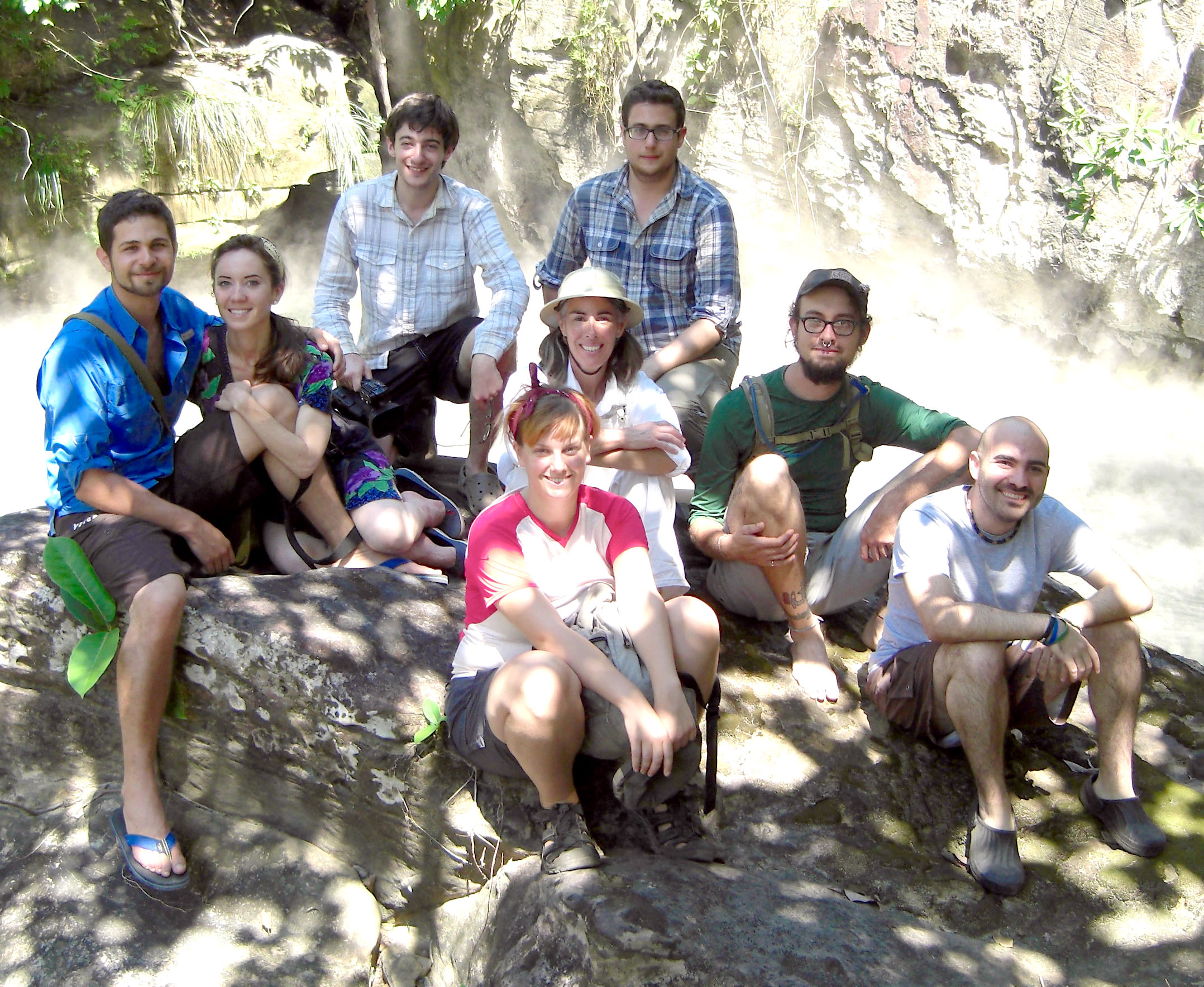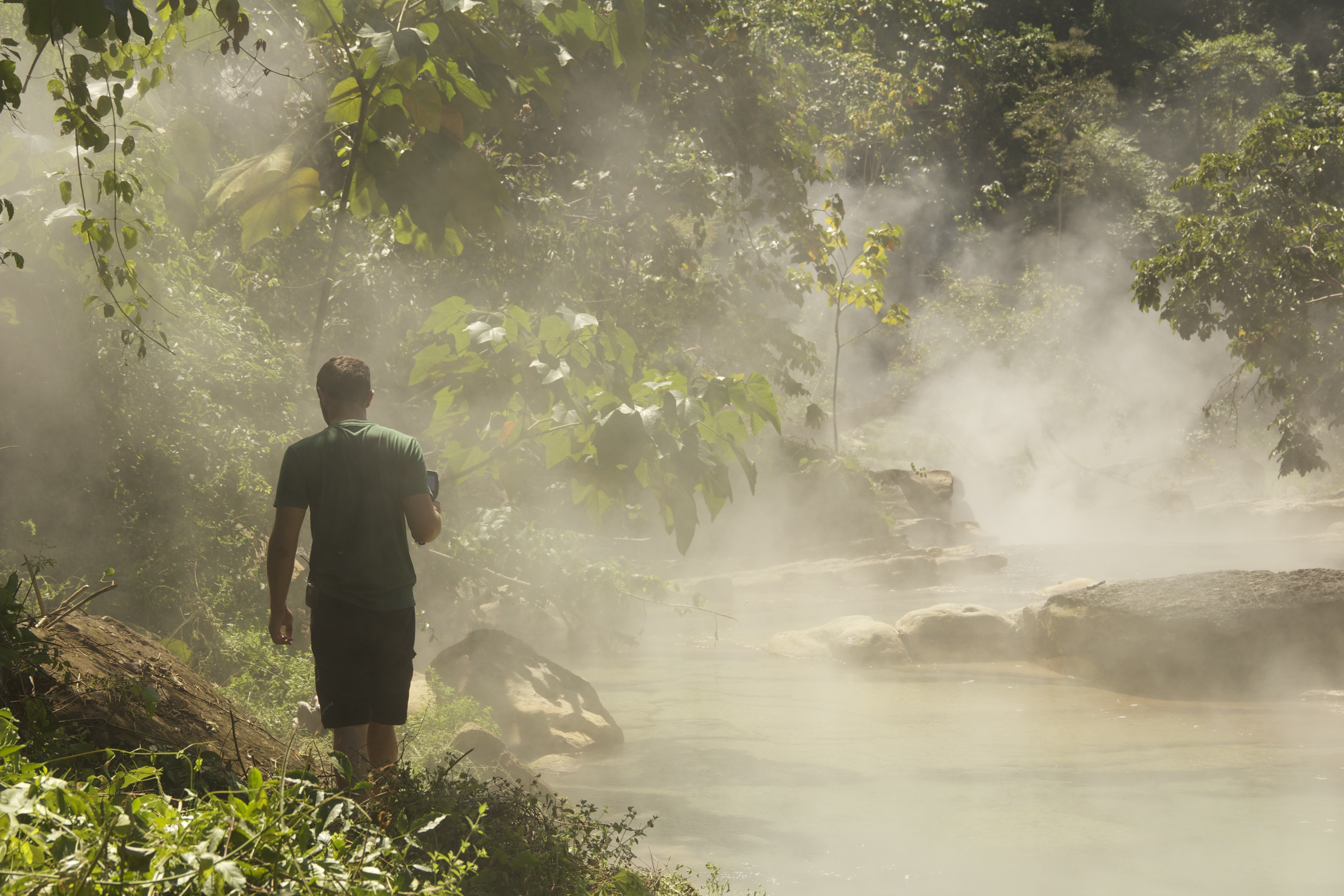Boiling Point
Andres Ruzo, an SMU Ph.D. student, writes about working near a river measuring 210°F.

By Andrés Ruzo
National Geographic Young Explorer Grantee
Expertise: Geothermal scientist
Location: Peru
As a geothermal scientist, I knew that boiling rivers exist—but they’re always near volcanoes. You need a lot of heat to make that much water boil. We were working in the volcanic gap, a 950-mile stretch that covers most of Peru, where there hasn’t been active volcanism for the past two million years.
Yet we’d found the Shanaya, a name derived from “heated thing.” My measurements averaged 190°-195°F. The locals think it’s so hot because of the Yacumama, or “water mother”—a spirit who gives birth to waters—represented by a serpent-head-shaped rock at the origin of the heated water.
I had to cut my way through the brush at the side of the river to take temperature readings. All the while, right next to me was this very hot, fast-flowing body of water the width of a two-lane street. The shaman at the nearest village had told me, “Use your feet like eyes.” You can’t see heat, but you can feel it when you step near it. I wore sandals.
# # #

